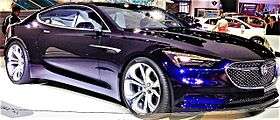Buick
Buick (/ˈbjuːɪk/) is a division of the American automobile manufacturer General Motors (GM). Named for automotive pioneer David Buick, it was among the first American marques of automobiles, and was the company that established General Motors in 1908.[2] Before the establishment of General Motors, GM founder William C. Durant had served as Buick's general manager and major investor. Buick was the first production automobile maker in the world to equip its cars with overhead valve engines, which it did in the year 1904.[2]
 | |
| Division | |
| Industry | Automotive |
| Founded | 1899 (as Buick Auto-Vim and Power Company) May 19, 1903[1] (as Buick Motor Company) |
| Founder | David Dunbar Buick |
| Headquarters | , United States |
Area served | China, United States, Canada, Mexico |
| Products | Automobiles |
| Services |
|
| Parent | General Motors (since 1908) |
| Website | www |
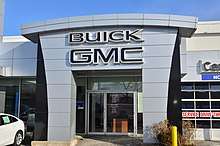
For much of its existence in the North American market, Buick has been marketed as a premium automobile brand, selling luxury vehicles positioned above GM's mainstream brands, while below the flagship luxury Cadillac division. In addition to wealthier buyers, Buick has also had a reputation of appealing to older buyers. In North America, Buick vehicles are almost always sold alongside GMC vehicles at joint dealerships, allowing the same dealer to market both upscale cars and trucks.
In 2017, Buick sold more than 1.4 million vehicles worldwide, a record for the brand.[3] The main market is China, where 80% of Buick-branded automobiles are sold.[4] Buicks are also sold in the United States, Canada, and Mexico.
History
Early years
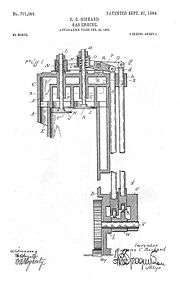
Buick is one of the oldest automobile brands in the world and the oldest in the United States. (Autocar, founded in 1897, is the oldest motor vehicle manufacturer in the western hemisphere; while originally an automobile maker, Autocar now builds heavy trucks. Oldsmobile, also an early auto maker founded in 1897, is now defunct; Studebaker was founded in 1852, but did not begin producing automobiles until 1902; Ford produced his first car in 1896 but did not start the Ford Motor Co. until 1903, and during the period in between was involved with other automobile manufacturers such as Cadillac, founded in 1902).
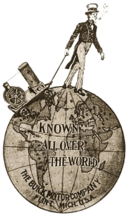
The first two Buick automobiles were made in 1899 and 1900 at the "Buick Auto-Vim and Power Company" by chief-engineer Walter Marr,[2] but company owner David Dunbar Buick was reluctant to begin making automobiles, being satisfied with stationary and marine engine production, so Marr left Buick in 1901 to found his own automobile company under his own name. His replacement was Eugene Richard, who applied for a patent in 1902 for Marr's valve-in-head (overhead valve) engine, which patent, number 771,095, was awarded to Richard in the name of Buick in 1904.[2] In 1903, the third Buick automobile was made, this time by Richard, but in 1904 Buick, whose company was now called "Buick Motor Company", moved from Detroit to Flint, Michigan, and Richard stayed behind. Marr was rehired in Flint as chief engineer, to begin making automobiles in production. That year, 37 Buick automobiles were made, production increasing to 750 in 1905, 1,400 in 1906, 4,641 in 1907, and 8,800 in 1908, taking the number one spot away from close competitors Oldsmobile, Ford, and Maxwell.[2]
David Buick incorporated his company as the Buick Motor Company on May 19, 1903, in Detroit, Michigan. Buick had been financed by friend and fellow automobile enthusiast, Benjamin Briscoe, who in September, 1903 sold control of the business to James H. Whiting (1842–1919),[5] of Flint Wagon Works, in Flint, Michigan. Whiting moved Buick to Flint, to a location across the street from his factory, with the idea of adding Buick's engines to his wagons.[2] David Buick stayed on as a manager, and re-hired Walter Marr as chief engineer. The engine Buick and Marr developed for this automobile was a two-cylinder valve-in-head engine of 159 cubic inches, with each cylinder horizontal and opposed to the other by 180 degrees.
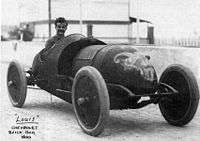
Whiting built only a few automobiles in 1904, the model B, before running out of capital, causing him to bring in William C. Durant that year as controlling investor. Durant built a few more model B's in 1904, and greatly stepped up production for the model C in 1905, and spent the next four years turning Buick into the biggest-selling automobile brand in the US. During the 19th century, Durant had made his fortune as co-owner, also in Flint, with Josiah Dallas Dort, of the Durant-Dort Carriage Company, which by 1904 was the largest carriage-making company in the country and one of the largest in the world.[2] Durant moved most Buick production to the former Durant-Dort Imperial Wheel plant in Jackson, Michigan in 1905. Buick continued car production in Jackson through 1907, when Factory #1 was completed in Flint. The Jackson plant continued production with Buick trucks through 1912.[6] David Buick sold his stock upon departure in 1906, making him a wealthy man, but he died in modest circumstances 25 years later. In 1907, Durant agreed to supply motors to R. S. McLaughlin in Canada, an auto maker, and in 1908 he founded General Motors.[7]
Buick in the early years
|
|---|
Between 1899 and 1902, two prototype vehicles were built[8] in Detroit, Michigan by Walter Lorenzo Marr. Some documentation exists of the 1901 or 1902 prototype with tiller steering[9] similar to the Oldsmobile Curved Dash. In mid-1904, another prototype was constructed for an endurance run, which convinced Whiting to authorize production of the first models offered to the public.[10] The architecture of this prototype was the basis for the Model B.
The first Buick made for sale, the 1904 Model B, was built in Flint, Michigan at a re-purposed factory that was known as the Flint Wagon Works.[11] There were 37 Buicks made that year, none of which survive. There are, however, two replicas in existence: the 1904 endurance car, at the Buick Gallery & Research Center in Flint, and a Model B assembled by an enthusiast in California for the division's 100th anniversary.[12][13] Both of these vehicles use various parts from Buicks of that early era, as well as fabricated parts. These vehicles were each constructed with the two known surviving 1904 engines.
The early success of Buick is attributed mainly to what it called the valve-in-head engine, now known as the overhead valve (OHV), engine[14] patented by Eugene Richard and developed by Richard, Buick, and Marr. The Model F had a two-cylinder engine, an 87-inch wheelbase and weighed 1,800 lbs.[15] The creation of General Motors is attributed in part to the success of Buick,[16] so it can be said Marr and Richard's designs directly led to GM.[17] The power train and chassis architecture introduced on the Model B was continued through the 1909 Model F.[18]
The basic design of the 1904 Buick was optimally engineered even by today's standards. The flat-twin engine is inherently balanced, with torque presented to the chassis in a longitudinal manner, actually cancelling front end lift, rather than producing undesirable lateral motion. The engine was mounted amidships, now considered the optimal location.[19]
Billy Durant was a natural promoter, and Buick soon became the largest car maker in America. Using the profits from this, Durant embarked on a series of corporate acquisitions, calling the new megacorporation General Motors. At first, the manufacturers comprising General Motors competed against each other, but Durant ended that. He wanted each General Motors division to target one class of buyer, and in his new scheme, Buick was near the top—only the Cadillac brand had more prestige, a ranking that Buick occupies currently in the General Motors lineup. To save on resources, Buick vehicles shared a common platform, called the GM A platform, that was shared with Chevrolet, Oakland, Oldsmobile and Cadillac. The ideal Buick customer is comfortably well off, possibly not quite rich enough to afford a Cadillac, nor desiring the ostentation of one, but definitely in the market for a car above the norm.
At first, Buick followed the likes of Napier in automobile racing, winning the first-ever race held at Indianapolis Motor Speedway.[20]
The first full-size Buick to join the smaller Model B was in 1907, when the Model D was introduced with a four-cylinder 255.0 cu in (4,178 cc) T-head engine, installed in the front with rear wheel drive. This was one of the only cars with side valves that Buick ever made.[21]
In 1911, Buick introduced its first closed-body car,[22] four years ahead of Ford, but five years after Cadillac, which was the first. The car was built at the all-new factory in Flint which later became to be known as Buick City.[23] Buick during the 1920s made various sized vehicles, with series designations for different years, sometimes using numbers, while later years using lettered designations. One of the larger vehicles, with straight-six, was the Buick Master Six.
In the 1910s and 1920s, Buick was a prestige brand in the Republic of China with brand driven by or for high level politicians and the Emperor. Buick now sells 80% of its production in the People's Republic of China and is a minor player in the Republic of China on Taiwan.[24]
In 1929, as part of General Motors' companion make program, Buick Motor Division launched the Marquette sister brand, designed to bridge the price gap between Buick and Oldsmobile; however, Marquette was discontinued in 1930. All Buick, Marquette, Viking, and Oldsmobile products shared the newly introduced GM B platform starting in 1926. Buick debuted two major achievements for the 1931 model year, the OHV Buick Straight-8 engine and a synchromesh transmission in all models but the Series 50. The Eight was offered in three displacements, the 220 cubic inch (bore 2 7/8 in. stroke 4.25 in.), was available in the Series 50 with 77 brake HP. The Series 60 engine was a 272 cu. in. unit (bore 3 1/16 in., stroke 5 in.) giving 90 brake HP.
The Series 80 and Series 90 used a 344 cu. in. version (bore 3 5/16 in., stroke 5 in.) for 104 brake HP. Automatic vacuum-operated spark advance was another new feature replacing the steering column mounted spark lever although an emergency lever was now dash mounted. Buick scored another first in 1939 when it became the first company to introduce turn signals, which did not appear on other car brands until almost a decade later.[25] All 1939 models also had a steering column mounted shift lever.
In the mid 1930s McLaughlin-Buicks were particularly popular with British monarch Edward VIII.[26][27] He imported and used a Canadian built McLaughlin-Buick. It was GM's top brand in Canada.[28] Being Canada's most luxurious brand, Buicks are always presented for royal transport within Canada, including for King George VI and Queen Elizabeth during the 1939 royal tour of Canada.[28]
In the 1920s and 1930s Cadillac and Buick vehicles were popular with long-distance passenger service operators e.g. the Nairn Transport Company in the Middle East (Baghdad-Damascus).
Early engines
1904–1911. Two cylinders horizontally opposed at 180 degrees, OHV, 159 cu. in.
1907–1924. Four cylinders, in line, OHV, 165 to 392.6 cu. in.
1914–1930. Six cylinders, in line, OHV, 191 to 331 cu. in.
1931–1953. Eight cylinders, in line, OHV, 221 to 345 cu. in.[29]
Post World War II years
1940s–1950s
|
|---|
1940s
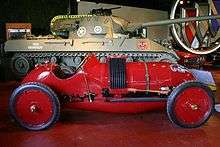
1940 saw the first use of the "Estate" designation for Buick on the Super station wagon. Due to World War II, automobile production stopped in 1942. Starting that year, Buick produced the M18 Hellcat tank destroyer and supplied radial engines for the B-24 Liberator, Douglas C-47 Skytrain, and Douglas C-54 Skymaster. By the fall of 1945, automobile production resumed. In 1948, the Dynaflow automatic transmission was first offered by Buick. 1949 saw the debut of Buick's VentiPorts.
1950s
1953 marked Buick's 50th anniversary as well as the introductions of the Buick V8 engine and the Roadmaster Skylark. In 1955, Buick had its best model year sales to date with 738,814 vehicles sold; a record that would hold until 1977. In 1957, Buick's new 364 cu. in. engine block and ball joint front suspension debuted and Roadmasters now had aluminum finned brake drums. 1959 saw the introduction of three new models: Electra, Invicta and LeSabre as well as a new 401 cu. in. V8 engine in the Electra and Invicta. An Electra also paced the Indianapolis 500 race that year.
1960s–1970s
|
|---|
1960s
An Electra 225 paced the Daytona 500 race in both 1960 and 1963. In 1961, a new Fireball V6 engine was introduced and the Skylark nameplate returned as top model of the new Special compact car line. The Buick Special was named Motor Trend Car of the Year in 1962. Also in 1962, Wildcat was introduced as a trim level on Invicta and became its own model the following year. In 1963 the Riviera was introduced as its own model. In the mid-1960s Buick started officially selling German-built Opel cars through its North American dealerships. For 1967, radial tires became available as an option on all full-size Buicks.[30]
1970s
The 1970s saw a number of new models added to the Buick lineup including the Estate Wagon as its own model in 1970, Centurion in 1971, Apollo in 1973, and Skyhawk in 1975. 1975 also saw the first appearance of the "Park Avenue" nameplate for Buick as a trim/option package on the Electra 225 Limited. A Buick Century paced the Indianapolis 500 race not once but twice in the mid 1970s. For 1976, Buick began selling rebadged Isuzu Geminis as Opels to replace the Opel Kadett models it had previously marketed. The following year, Electra 225 and LeSabre were redesigned and downsized and the Buick brand saw its best model year sales to date with 773,313 vehicles sold. 1978 marked Buick's 75th anniversary and welcomed a redesigned Century as well as a redesigned Regal coupe which was now available with a turbocharged V6 engine. Buick model year sales broke another record in 1978 with 795,316 vehicles sold. For 1979, the Riviera was redesigned; Riviera S-Type was named Motor Trend Car of the Year.
1980s–1990s
|
|---|
1980s
In the 1980s, Buick's lineup saw several changes including the downsizing of various models. In 1980, Lloyd Reuss was appointed as general manager and further pushed Buick into turbocharging, racing, and performance production cars, building momentum which continued a number of years after his departure in 1984 as he headed toward a brief term as GM president. Also in 1980, the Diesel engine becomes available on select Buick models and Somerset is introduced as a trim/option package on the Regal Limited. In 1981, the T-Type performance trim is introduced on the Riviera. Regal was the official pace car of the Indianapolis 500 race in 1981. In 1982, the Grand National high performance package is first offered on Regal. A soft-top Riviera helped lead the return of the convertible, which had disappeared from domestic lineups in 1976. The following year, a Riviera convertible with a twin-turbo V6 paced Indy 500. Also in 1983, Buick had its best model year to date with 810,435 vehicles sold.
In 1984, Buick was the official car of the XXIII Olympiad. A reorganization split manufacturing & engineering from sales and marketing. The first pilot Buick is produced at "Buick City", a state-of-the art assembly center built inside the walls of Buick's home plant at Flint. Buick had its best model year sales to date with 906,626 vehicles sold plus Buick worldwide sales topped one million for the first time. To close out 1984, Lloyd Reuss ended his tenure as general manager of the Buick Motor Division.
In 1985, the Somerset was introduced as its own model. Also, the Electra coupe and sedan were redesigned and converted to front-wheel drive and were initially powered by a carbureted 3.0 liter Buick V6 engine, a fuel injected 3.8 liter Buick V6 engine, or a 4.3 liter Oldsmobile diesel V6 engine. Each was mated to a 4-speed automatic transmission with a 0.70:1 overdrive gear. The 3.0 liter V6 and 4.3 liter diesel V6 were no longer offered after 1985. During the 1985 to 1989 model years, the Electra name also continued to be used on the rear-wheel drive B-body "Estate" station wagon. Buick-powered cars won pole and second position in qualifying for Indianapolis 500. Over the next few years, Buick engines would set a number of stock-block records and twice would power a third or more of the 33-car Indy 500 field (11 in 1990 and 12 in 1992). 1985 would be the final year for the rear-drive LeSabre before another downsizing and conversion to front-wheel-drive for 1986 (sedans and coupes only; the rear-drive LeSabre Estate Wagon would soldier on largely unchanged a few more years). The top-line LeSabre Limited became the LeSabre Limited Collectors Edition to mark the end of an era for the rear-wheel drive coupe and sedan; engine offerings included the standard 231 V6 (sedans and coupes) or optional Olds 307 V8 or Oldsmobile 350 diesel V8. 1985 saw Buick's best model year sales to date with 915,336 vehicles sold.
In 1986, the LeSabre was introduced on the new front wheel drive H platform, after departing from rear wheel drive on the GM B platform. Joining the LeSabre on the H-body included the Oldsmobile Delta 88. One of the most striking features of the new LeSabre was the hood was hinged towards the front instead of towards the back near the cowl and windshield in the same fashion as that of the Buick Electra and Chevrolet Corvette of that era. The all new styling and implementation of front wheel drive ushered in a new era for the LeSabre, being of a flush aerodynamic design. Most radical may have been the removal of Buick's long standing Ventiports from the front fenders. In 1986, a LeSabre Grand National model was built to qualify the coupe body-style for NASCAR competition. The LeSabre Grand National is among the rarest of all Buicks ever made, with production numbers of less than 120 units. It was only available in black with gray interior.[31]
Also for 1986, the E-body Riviera was converted to unibody construction and further downsized to a 108 in (2,700 mm) wheelbase similar in length to that of the Buick Regal. The V6 was now the only engine, rated initially at 142 hp (106 kW) SAE and 200 lb⋅ft (270 N⋅m) of torque. It used the Turbo-Hydramatic 440-T4 automatic with a 2.84:1 final drive ratio. This generation was noted for advanced electronic instrumentation displayed on a dash-mounted 9-inch (230 mm) CRT. The CRT controlled the vehicle's climate control system and stereo, and also supplied advanced instrumentation such as a trip computer and maintenance reminder feature. Four-wheel disc brakes were standard. With a choice of three suspension packages available, up to the performance oriented FE3 setting, handling was notably improved. The Riviera placed fourth for Motor Trend's 1986 Car of the Year contest. Fuel economy was notably improved for the 1986 Riviera, but the investment in the downsized, transverse engine front wheel drive platform resulted in a substantial price increase to $19,831 for the base model to $21,577 for the new T-Type. Downsizing also resulted in a dimensional similarity to smaller, less expensive offerings from GM. The smaller dimensions, generic styling, and lack of a V8 led to Riviera sales plummeting to 22,138 for 1986.
In 1987, the last of the turbo/intercooled Regal Grand Nationals, often called the quickest American cars, were offered as well as 547 even quicker special-edition '87 GNXs. It would also be the last year for the rear-wheel drive Regal. General manager Ed Mertz promoted the new "Premium American Motorcars" theme which focused Buick marketing on the various qualities that made the marque famous.
In 1988, Buick was the official car of the U.S. Olympic Team. The Reatta two-seater was introduced, to be followed two years later by a convertible. Also in 1988, Regal was downsized and converted to front-wheel drive. Bobby Allison won the Daytona 500 in a Regal that year and the Academy Award-winning film Rain Man prominently featured a 1949 Roadmaster convertible. 1988 also saw the debut of "The Great American Road Belongs to Buick" slogan.
In 1989, a new Electra trim level was offered called the Park Avenue Ultra. The Ultra was essentially an upgrade to the Electra Park Avenue, and featured a standard leather trimmed interior with dual 20-way power front seats (shared with Cadillac's restyled 1989 Fleetwood Sixty Special), lower-body accent exterior paint treatment, distinctive thick-padded vinyl top with limousine-style rear-window surround (available only on Ultra), simulated burled elm trim on the doors and instrument panel, unique aluminum wheels, anti-lock brakes, chromed B-pillar moldings, specific grille and tail lamps, leather-wrapped steering wheel, electronic instrumentation, padded glove-compartment door, unique interior door panel trim, and a variety of otherwise minor changes. With its long list of standard equipment, the Park Avenue Ultra carried a higher base price than Cadillac's Sedan de Ville. The Riviera was also restyled for 1989, adding 11 inches to its overall length. In the late 1980s, the Flint-built LeSabre ranked #1 in North America and #2 in the world in a major independent quality study which eventually led Buick to change its ad slogan from "The Great American Road Belongs to Buick" to "Buick: The New Symbol for Quality in America."
1990s
In 1990, the first Reatta convertible was produced. 1990 was also the last year for the Electra as Park Avenue, previously a trim level on the Electra, became its own model for the 1991 model year. In 1991, Buick led the industry in improvement in sales and market share. A new four-door Regal came to market for 1991, the first Regal sedan since 1984. Buick also introduced a supercharged 3.8-liter V6 in the Park Avenue Ultra. Supercharging became so popular at Buick that by the new millennium, Buick was the leading marketer and industry leader of supercharged cars. 1991 saw the return of the Roadmaster after a 33-year absence. The Roadmaster was first offered as a wagon only and then a sedan was added for 1992.
For 1992, the popular LeSabre was redesigned along the same lines as the previous year's Park Avenue. 1992 also saw introduction of a new, redesigned Skylark. In 1993, a special edition LeSabre was sold to commemorate Buick's 90th anniversary. In addition to Custom trim level standard equipment, this model included "90th Anniversary" badging, cassette player, cruise control, rear window defogger, power driver's seat, carpeted floor mats, exterior pinstripes, and choice of wire or aluminum wheel covers.
In 1995, after a hiatus in 1994, the Riviera returned with radical styling that departed from the previous generations' more traditional image. A 205 hp (153 kW) naturally aspirated 3800 V6 was standard, with a supercharged version rated at 225 hp (168 kW) and 275 lb⋅ft (373 N⋅m) available as an option. Rivieras were now built in Lake Orion, Michigan, riding the same Cadillac-derived G platform as the 4-door Oldsmobile Aurora.
In 1996, both the Roadmaster sedan and wagon were discontinued. In 1998, after 95 years in Flint, Buick headquarters was moved to Detroit. Bob Coletta, Buick general manager, saw the first Chinese Buick roll off line at Shanghai before he turned over top Buick job to Roger Adams. Buick Gallery and Research Center opened at Flint's Sloan Museum. A reorganization at the division split sales from marketing.
In 1999, the last of nearly 16 million Buicks was built in Flint’s Buick City. The last car, a 1999 LeSabre, rolled off the assembly line on June 29 that year. In a major independent quality study, Buick ranked #2 (and top domestic) among 37 international brands and Buick City shared top world position among automotive assembly plants. With sales of all coupes declining in the North American market, GM decided to discontinue the Riviera. 1999 was the car's last model year with production ceasing on November 25, 1998. The final 200 cars had special silver paint and trim, and were denoted "Silver Arrow"[32] models, a designation which hearkened back to several Silver Arrow show cars that had been built off Riviera bodies by Bill Mitchell. The eighth-generation Rivieras received the most powerful V6 Buick engine since the Grand Nationals of the 1980s. The supercharged OHV V6 gave impressive torque and acceleration, pushing the car from 0 to 60 miles per hour (97 km/h) in under 7 seconds, and turning the 1⁄4 mile in 15.5 seconds and achieved MPG fuel efficiency ratings of 18 city/27 highway.
Recent years
2000s–2010s
|
|---|
2000s
In the 2000s, Buick's lineup was modified with the compact and performance segments being abandoned in favor of the crossover/SUV market which was growing in popularity. In 2000, Buick headed into the new millennium with a redesigned LeSabre (best-selling U.S. full-size car for eight straight years) and a more powerful Century. Since the first Detroit experimental car of 1899-1900, and first Flint production car of 1904, more than 35 million Buicks had been built. The 2000 LeSabre was introduced in March 1999 and was now built on GM's G platform; however GM chose to continue to refer to it as the H platform.[33] The LeSabre was manufactured at GM's Detroit/Hamtramck Assembly factory in Hamtramck, Michigan and Lake Orion Assembly, in Lake Orion, Michigan. Some of the changes with the redesign included a new grille that did not open with the hood, and slightly smaller exterior dimensions. Despite its somewhat smaller exterior size, it still offered similar interior room and more trunk space than the previous model. 2001 saw Buick's first entry into the crossover market with the introduction of the Rendezvous as a 2002 model. In 2003, the Buick Centieme crossover concept car commemorated Buick Motor Division's 100th anniversary. Some of the Centieme's exterior design and interior features would later appear on the 2008 Enclave crossover. In 2004, Buick added the Rainier mid-size SUV and the new Terraza minivan was added a year later.
In the years following, Buick began consolidating its North American lineup and by 2008 had reduced it to just three models: the LaCrosse/Allure, the Lucerne, and the new-for-2008 Enclave. The Super name had also returned after a 50-year absence as a new performance trim level on LaCrosse and Lucerne. The brand's total overall sales slipped in the United States, and, with a reputation for primarily appealing to older buyers, rumors circulated throughout this decade that the Buick marque would be discontinued.[34] The profitability of the model lineup and popularity in China ensured Buick's future within General Motors, with the decision being made to discontinue the Pontiac brand instead.[35]
Since 2005, GM had gradually consolidated Buick with GMC and former Pontiac dealerships to create the current Buick-GMC network. During General Motors Chapter 11 reorganization and emergence in 2009, the company designated Buick as a "core brand", citing the division's success in China.[36] Behind the scenes, GM began to move products originally planned for other brands to Buick. The Opel Insignia was originally intended to become the second-generation Saturn Aura, but instead became the new Buick Regal.[37][38] In the 2009 J.D. Power and Associates Vehicle Dependability Study, Buick tied with Jaguar as the most dependable brand in the United States.[39]
2010s
The 2010s saw the return of a classic Buick nameplate (Regal) as well as the addition of several new ones. The decade also saw the brand's first hatchback since 1987, first factory convertible since 1991, and first station wagon since 1996. Buick further expanded its presence in the popular crossover/SUV market in the 2010s as well.
In January 2009, Buick unveiled the new 2010 LaCrosse sedan, an all new styling direction which included traditional Buick cues. The market responded positively to the LaCrosse and reviews favorably compared it luxury models such as the Lexus ES.[40] In 2010, Buick became the fastest growing automotive brand in America and attracted a younger customer demographic.[41] A GM company spokesman at the time said that Buick was positioned as a "premium" marque (entry-level luxury) to compete with various Acura, Infiniti, Lexus, and Volvo models, while Cadillac was aimed at the "luxury" performance segment which includes brands like BMW and Mercedes-Benz.[42] An all-new Regal sedan, a smaller model based on the European Opel Insignia, was re-introduced for the 2011 model year after a seven-year absence. For 2012, the all-new Verano, which was a compact sedan based on the Chevrolet Cruze, joined the lineup. Additionally, the performance-oriented Regal GS officially went on sale and became the first Buick in almost 20 years to be offered with a manual transmission and a turbocharger. Buick also entered the hybrid market with the introduction of eAssist technology on the 2012 LaCrosse and Regal which helped improve fuel economy ratings by as much as 38% over the regular gas-engine versions. Meanwhile, sales of the Enclave crossover remained strong. In January 2012, the all-new Encore mini crossover was unveiled at the North American International Auto Show in Detroit. Also in 2012, a turbocharged version of the Verano was introduced and the Enclave was redesigned for the 2013 model year. In 2013, GM confirmed plans of a "hybrid global brand" which includes Opel/Vauxhall and Buick using more synergies between the brands.[43][44] LaCrosse and Regal were refreshed for the 2014 model year. In 2015, the all-new Cascada subcompact convertible debuted at the North American International Auto Show in Detroit. In November, the all-new 2017 LaCrosse was shown at the Los Angeles Auto Show. Buick also confirmed that the Envision compact crossover would be sold in North America starting summer 2016. The Verano compact sedan was dropped from the Buick lineup in North America in 2017. With GM selling off the Opel/Vauxhall division to Group PSA in March 2017, Buick is expected to move away from sharing Opel model/designs upon the completion of the current generation vehicles.[45]
For 2018, Buick replaced the Regal sedan with an all-new model offering hatchback and station wagon body styles. This new Regal was the first hatchback from Buick for the North American market since the 1987 Skyhawk and the first station wagon since the 1996 Roadmaster. A sub-brand was also added in 2018 to accompany Buick, with the Avenir badge being applied to its top of the line level trims, utilizing the same strategy as GMC's successful Denali sub-brand.[46] 2019 would be the last year for the Cascada convertible globally and the LaCrosse sedan for the North American market.
2020s
New for 2020 is the Encore GX crossover which slots in between the existing Encore and Envision. For the 2020 model year, Buick's North American lineup consists of the Encore subcompact crossover, the Encore GX compact crossover, the Envision compact crossover, the Enclave mid-size crossover, and the Regal mid-size hatchback and station wagon.
Production models
Current lineup
|
|---|
Current
China
|
North America
|
Past
- Model B (1904)
- Model C (1905)
- Model F & G (1906–1910)
- Model 10 (1908–1910)
- Model 14 & 14B (1910–1911)
- Model 28, 29, 34, 36 & 43 (1912)
- Model 24, 25, 30, 31 & 40 (1913)
- Series B (1914)
- Series C (1915)
- Series D (1916–1917)
- Series E (1918)
- Series H (1919)
- Series K (1920)
- Series 21 (1921)
- Series 22 (1922)
- Series 23 (1923)
- Series 24 (1924)
- Master Series (1925–1928)
- Standard Series (1925–1928)
- Series 116, 121 & 129 (1929)
- Series 40 (1930–1935)
- Series 50 (1930–1935)
- Series 60 (1930–1935)
- Special (1936–1958, 1961–1969)
- Roadmaster (1936–1958, 1991–1996)
- Century (1936–1942, 1954–1958, 1973–2005)
- Super (1939–1958)
- Skylark (1953–1954, 1961–1972, 1975–1998)
- Invicta (1959–1963)
- Electra (1959–1990)
- LeSabre (1959–2005)
- Wildcat (1963–1970)
- Riviera (1963–1993, 1995–1999)
- Estate (1970–1979, 1990)
- Centurion (1971–1973)
- Apollo (1973–1975)
- Skyhawk (1975–1980, 1982–1989)
- Opel (1976–1979)
- Somerset (1985–1987)
- Reatta (1988–1991)
- Park Avenue (1991–2005, 2007–2012)
- Sail (2001–2004)
- Rendezvous (2001–2007)
- Rainier (2004–2007)
- Royaum (2005–2006)
- Terraza (2005–2007)
- Lucerne (2006–2011)
- Excelle XT (2010–2015)
- Cascada (2016–2019)
- Velite 5 (2017–2019)
Concept cars
Concept cars
|
|---|
Buick has a long history of creating intriguing concept cars dating back to the Y-Job, the industry's first concept car, of 1938. Its most recent concepts have included the Avenir, unveiled at the 2015 North American International Auto Show, and the Avista which was unveiled a year later at the 2016 North American International Auto Show.
Distinguishing features
Trishield
.jpg)
The Buick Trishield is rooted in the ancestral coat of arms of the automaker’s founder, David Dunbar Buick. That crest was a red shield with a checkered silver and azure diagonal line from the upper left to lower right, a stag above, and a punctured cross below. The division adopted this on its radiator grilles in 1937. In 1960, the logo underwent a major overhaul. Its single shield was replaced by a trio in red, white, and blue—denoting the LeSabre, Invicta, and Electra then in the Buick lineup. It was supplanted by the Buick Hawk in the 1970s, but the trishield reemerged in the 1980s, simplified, but with its same patriotic colors. The Trishield with red, white, and blue features, was simplified in 2005, but the colors have returned representing the current trio of vehicles in the Buick marque for sedans and crossovers. However, the Trishield enjoys its even more distilled and emboldened tri-color form.
VentiPorts
A traditional Buick styling cue dating to 1949 is a series of three or four 'vents' on the front fenders behind the front wheels. The source of this design feature was a custom car of Buick stylist Ned Nickles, which in addition had a flashing light within each hole, each synchronized with a specific spark plug to simulate the flames from the exhaust stack of a fighter airplane. Combined with the bombsight mascot (introduced in 1946), Nickle's custom Buick invoked an imaginary fighter airplane. The flashing light feature was not used by Buick in production.
The 1949 Buick Sales brochure stated the following "...four chrome-ringed Venti-Ports on forward fenders (three on all Super models) striking a smart nautical note while serving to ventilate the engine compartment." Air entered from the grille into the engine bay, was pressurized by the radiator fan and exited (partially) through the VentiPorts. However, sometime during the 1949 model year this attribute was discontinued and the VentiPorts became non-functional.
When introduced in 1949, there were only 2 model lines; the higher priced Roadmaster had 4 ports per side, the lower series Super had 3. This was echoed over the next few years. By '54, Buick had added the Special and Century model lines, and although the Century and Super both used the same engine as the top-line Roadmaster, only the Roadmaster wore 4 VentiPorts. And the '53-54 Skylark had none.
Buick was not entirely consistent with how they applied the styling feature, so theories that their count was tied to engine or body shell size is not factually consistent. It is more accurate that Buick tied the Ventiport count to the model line, and that was dependent on the year in question. For example, in '55 the Century and Super were both 'promoted' to 4 VentiPorts per side, despite the fact that the Century was sharing the smaller body shell with the '3-holer' Special.
Buick temporarily dropped the VentiPorts for model years 1958 and 1959. 1958 is infamous for being relatively over-adorned, perhaps stylists decided there wasn't 'room' for Ventiports that year. But by model year 1960, they were back.
In 1961, Buick introduced the first V6 engine installed in an American passenger car, called the Fireball V6 in the Buick Special, and three VentiPorts appeared on the side. This still was not tied to cylinder count however, as the V8 LeSabres continued to carry 3 Ports per side. Also during this era, Buick used what the '67 Buick GS brochure called "vertical VentiPorts" to describe trim details seen on the lower half of front fenders on the Skylarks and Wildcat lines. The specialty Riviera model had neither, akin to the '53-54 Skylark. VentiPorts were used on most models over the next 2 decades.
VentiPorts appeared on the limited production 1987 Buick GNX, and once again they were functional. Then the feature was dropped again, until 2003 when VentiPorts were re-introduced on the Buick Park Avenue Ultra. After the Park Avenue was discontinued, Buick incorporated VentiPorts on the new-for-2006 Lucerne. For the first time it seemed Buick was tying VentiPort count to the number of cylinders; the V6 Lucernes had three on each side, while V8s had four on each side.
Modern and edgy compared to the oval ones that adorned Buicks for years, the new VentiPorts have become a Buick-wide talisman again. The newly designed VentiPorts appear on every Buick model from 2014 onward.[48]
Sweepspear

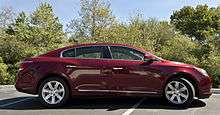
Another styling cue from the 1940s through the 1970s was the Sweepspear, a curved trim line running almost the length of the car. Introduced as an option on the 1949 Buick Roadmaster Riviera hardtop coupe, the original Sweepspear was a chrome-plated steel rub strip which began level over the front wheel, gently curved down across the front fender and door, dove nearly to the rocker panel just ahead of the rear wheel, then flared up and over the rear wheel before leveling off again into a straight run back to the tail-light. The shape of the feature shows similarities to the Jaguar XK120, with the feature running the length of the car in both examples.
The "Riviera trim", as it was initially called, was made available on the Roadmaster convertible very late in the '49 model year. It proved so popular that by the 1951 model year it was made a standard feature on all Buicks. During the two-tone color craze of the 1950s, it separated two different color areas.
In time, the Sweepspear became stainless steel, then a vinyl rub strip or simple character line in the sheetmetal, as hinted in some versions of the Buick Riviera, distinct on the 1968-1969 Skylark, and appearing on the 2008 Invicta concept car. Often optional trim was available to reinforce a plain character line in the bodywork. The feature was re-introduced with the 2nd generation Buick LaCrosse.
Delta fin
The 1958 Buick was marketed beginning in September 1957, just as the space age began with the launching of Sputnik I on October 4 of that year. This Buick was nicknamed "the king of chrome" and had rear tailfins reminiscent of a rocket ship.[49][50] In 1959, Buick had the aerodynamic Delta Fin.[51][52] It was snubbed down in 1960 and disappeared in 1961.
Taillight shapes
During the 1950s, the characteristic form of the Buick taillamps was a tier of small, circular bullet-shapes. In the early 1960s, most models began to evolve a wide, rectangular pattern, until the 1965 Skylark and Electra models appeared with full-width rear lamps. Since then, wide taillamps have been a Buick hallmark, usually consisting of four bulbs on each side. The brake light illumination uses the two outer bulbs, while the two inner bulbs remain as tail lights.
Classic grille styling
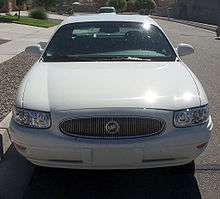
The Buick styling cue (dating from the 1942–1958 period) that has most often reappeared, though, is for the grille to be a horizontal oval with many, thin, vertical chromed ribs bulging forward. This has sometimes been called the Buick "dollar grin" particularly on the early 1950s models, which had thick, highly polished ribs that somewhat resembled teeth. The 1950 model took this tooth theme to its extreme as the teeth crossed over the bumper exposing the 1950 "grin". The 1951 model reined in the theme, bringing the teeth back behind the bumper. Current Buick Models have a new take on the classic styling with their Chromed "Waterfall Grilles".
Waterfall grille
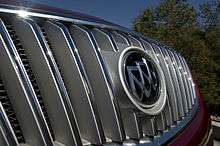
In recent years, Buick has adopted a waterfall grille, as seen on the Buick Velite concept car from 2004 and first used in production with the Buick Lucerne introduced for the 2006 model year. This waterfall grille bears some resemblance to grilles of Buicks from the 1980s, such as the Grand National.
Nailhead
The Buick V8 engine, nicknamed the Nailhead because of its relatively small intake and exhaust valves which resembled nails, became popular with hot-rodders in the 1950s and 1960s, because the vertical attachment of the valve covers, in contrast to the angled attachment of other V8 engines, enabled the engine to fit into smaller spaces while maintaining easy access for maintenance.
Performance
In addition to premium and luxury vehicles, Buick has also been well known for its offerings of high performance cars. Some of the better known examples included the Gran Sport and GSX models of the 1960s and 1970s, and the Grand National and GNX models of the 1980s.
World distribution
Asia
Buick is one of China's most popular, best selling automobiles.[4] In 2016, General Motors sold over 1.1 million Buicks in China.[53] Buicks have always been popular in China. In pre-World War II China, one in five cars was a Buick.[54] Buicks were used by the last emperor Puyi, the first president Sun Yat-sen, and the first premier Zhou Enlai.[4]
Since 1999, a Buick Regal for China has been produced and sold by Shanghai GM and has proven to be popular among upscale, professional families, establishing Buick as one of the most popular vehicle brands in China. In addition, Buick of China sells a compact Excelle, similar to a five-door hatchback version called the HRV, and a minivan named the GL8. Many Buicks for the local market are equipped with smaller more fuel efficient engines with double overhead camshafts, than those with overhead valves in the same nameplate for the American market.[55]
GM Taiwan was founded in August 1989. In the early 1990s, Buick, along with other GM brands, was very popular and frequently seen on Taiwanese streets. Park Avenue, 3rd and 4th generation Regal, and 6th generation Skylark used to be sold in Taiwan. In December 2004, General Motors signed a memorandum of understanding with Yulon, a firm based in Taiwan, for the licensed manufacture of Buick vehicles there. In July 2005, Yulon GM Motor Co. Ltd. (Yulon GM), a joint venture with 51 percent equity stake held by Yulon Motor and 49 percent by GM, was founded.
In April 2010, Buick debuted a localised version of LaCrosse, named Alpheon, to the South Korean market.
Mexico
Buicks were sold in Mexico from 1921 to 1962, when a protectionist policy on behalf of the government restricted the percentage of imported parts that could be used in the manufacture of vehicles and the sale of imported cars. From then onwards, all GM products were sold by Chevrolet dealerships. In 1990, after a heavy modification to the protectionist policy of the sixties, GM started assembling the Buick Century in Mexico, at the plant in Ramos Arizpe, in the state of Coahuila, just south of Texas, and selling it through Mexican Chevrolet dealerships, so it was not uncommon for many people to call it "Chevrolet Century". In 1997, GM stopped production of Buicks in Mexico and the brand was not sold there until 2009.
With the announcement in 2009 of the elimination of the Pontiac brand, it was speculated that Buicks would be sold once again in Mexico, since there was a large network of Pontiac-GMC dealerships already in place. On July 24, 2009, Grace Lieblein, the new president of GM in Mexico, revealed that the Buick brand would be available in Mexico in late September of that year, after an absence of a dozen years, with the LaCrosse and the Enclave models. Buick shared the dealership floor with Pontiac and GMC until the Pontiac brand faded away in the summer of 2010.
On March 26, 2019, Buick announced that the Mexican division will offer only crossovers (Encore, Envision, and Enclave). The La Crosse sedan, Regal hatchback and Regal TourX station wagon were dropped from the market as those brands are expected to go away due to Opel's future (under new owner PSE) regarding the Insignia that is tied to the North American-badged Regal and Buick's decision to make the La Crosse exclusive to China.[56]
Middle East
In Israel, Buicks are imported by Universal Motors, Ltd. (UMI), which also imports other GM vehicles. For model years 2004 and 2005, the Buick LeSabre and Buick Rendezvous were sold. For model years 2006 and 2007, the Buick LaCrosse and Buick Lucerne were sold alongside the Rendezvous. For model year 2008, the Buick LaCrosse and Buick Lucerne were available. Buicks were sold throughout the Middle East until the second-generation Buick Roadmaster was discontinued. Buick were also sold in the Gulf Cooperation Council markets until 1996 after the 8th gen Buick Roadmaster got discontinued.
New Zealand
Buicks were once sold in New Zealand. They were also built at the GMNZ plant in Petone, outside Wellington.[57] At the end of World War II, the Buick name was not revived for the New Zealand market.
Motorsport
For many years, Buick was a substitute for Chevrolet in automobile racing. No earlier than the 1960s, Buick was a competitor in the Indianapolis 500, and (like almost every other American manufacturer) also participated in the Grand National stock car racing series using its Regal and later the Gran Sport.
The golden age of Buick in motorsport, however, was the early to late 1980s. General Motors entered the Regal, particularly the Grand National model, in the NASCAR Cup Series alongside the Oldsmobile Cutlass. Buick was also a major powerplant in the IndyCar Series and IMSA GT Series (particularly in the IMSA GTP class) for several years. The 1990s, however, proved to be the end of Buick's reign in motorsports, as GM replaced it for many years with Oldsmobile before phasing out that marque in 2004. Oldsmobile would be replaced by Pontiac until its demise in 2009, being replaced by Chevrolet.
Buicks were also entered in the Trans Am Series in the 1980s and 1990s using aftermarket V8 engines.
Enthusiast organizations
The Buick Club of America, founded in 1966, is a non-profit organization dedicated to the preservation and restoration of automobiles built by the Buick Motor Division of General Motors Corporation.
Advertisements
 A 1911 Buick Advertisement - Syracuse Post-Standard, January 21, 1911
A 1911 Buick Advertisement - Syracuse Post-Standard, January 21, 1911 1913 advertisement
1913 advertisement The Saturday Evening Post, November 1920
The Saturday Evening Post, November 1920 1912 Buick logo
1912 Buick logo Cover of 1925 promotional folder from Swedish reseller
Cover of 1925 promotional folder from Swedish reseller Advertisement for 1916 Buick by dealer Howard Automobile Co., San Francisco.
Advertisement for 1916 Buick by dealer Howard Automobile Co., San Francisco.
References
- BUICK MOTOR DIVISION HISTORY by Lawrence R. Gustin, 1993 - Buick Motor Division
- "The Buick, A Complete History," third ed., 1987, Terry P. Dunham and Lawrence Gustin.
- "Two Straight Years of 1.4 Million Sales for Buick". General Motors. 2018-01-12. Retrieved 2018-01-12.
- Frankel, Todd C. (January 20, 2016). ""That's a Buick?" In China, unlike the U.S., there's no doubt". Washington Post.
- Flint Timeline Project-James H. Whiting Archived July 7, 2009, at the Wayback Machine
- "All Things Buick". buickcity.blogspot.com. Retrieved 2018-07-09.
- VMC virtualmuseum.ca McLaughlin-Buick:"Canada's Standard Car"
- "Buick History". Welovebuicks.com. Archived from the original on 2009-03-07. Retrieved 2010-10-16.
- "1901 Buick perhaps 1902". Prewarbuick.com. 2002-01-01. Retrieved 2010-10-16.
- "James H. Whiting". Thewhiting.com. Archived from the original on 2010-05-22. Retrieved 2010-10-16.
- "1904 Buick Model B". RunBidSell.com.com. Retrieved 2019-09-02.
- "1904 Buick Prototype - Sloan Museum". 1929buick.com. Archived from the original on 2011-07-07. Retrieved 2010-10-16.
- "1904 Buick Model B - Restoration Project". 1929buick.com. Archived from the original on 2011-07-07. Retrieved 2010-10-16.
- "A Heritage of Precision". Buick. Archived from the original on 2008-09-23. Retrieved 2010-10-16.
- "1906 Buick Brochure". Oldcarbrochures.com. Retrieved 2011-11-20.
- "The free-wheeling gambler who created conservative General Motors". Info.detnews.com. 1996-07-30. Archived from the original on 2012-07-10. Retrieved 2010-10-16.
- Stoll, John D. (2008-07-07). "GM Weighs More Layoffs, Sale of Brands". Online.wsj.com. Retrieved 2010-10-16.
- Katz, John F. (1998-03-02). "1909 Buick Model F". Autoweek.com. Archived from the original on 2011-06-28. Retrieved 2010-10-16.
- "Buick History (1904-1929)". 1929buick.com. Archived from the original on 2011-07-07. Retrieved 2010-10-16.
- Wells, Dick. "SRMA Update" in Street Rodder, 12/98, p.298. The accuracy of this source is in question, however.
- "Buick Pre 1930 General Specs". www.carnut.com. Archived from the original on 2019-02-26.
- Clymer, Floyd. Treasury of Early American Automobiles, 1877-1925 (New York: Bonanza Books, 1950), p.121.
- Clymer, p.120.
- https://money.cnn.com/2017/02/22/news/companies/buick-china-history-brand/index.html
- "Who Made That Turn Signal?". The New York Times. July 12, 2013.
- Davies, Caroline (2001-08-23). "Car that took King into exile goes on sale". The Daily Telegraph. London.
- "Genesis modernizes car buying with online convenience". 5 December 2016.
- "Car News - Auto News - Driving". Driving.
- The Buick, A Complete History, Dunham and Gustin
- LaChance, David (July 2006). "1966–'67 Buick Riviera GS". Muscle Machines. Retrieved July 26, 2015
- "1986 LeSabre Grand National Page". Archived from the original on 2012-02-11. Retrieved 2012-01-08.
- "Riviera Owners Association, The car club dedicated to restoration of the Buick Riviera".
- Frame, Phil (16 January 1995). "GM H CARS MOVE TO G PLATFORM". Automotive News. Archived from the original on 16 June 2013. Retrieved 17 May 2013.
- Dederer, Andrew (2008-04-25). "Buick and the Detroit Zombies". The Truth About Cars. Retrieved 2011-09-23.
- Krebs, Michelle (2009-06-29). "'Good' GM: Maybe Not All That Good". Edmunds Auto Observer. Retrieved 2011-06-03.
- Evans, Scott (2009-04-02). "GM CEO Henderson Says Buick is a Core Brand". MotorTrend.com. Retrieved 2011-06-03.
- "2011 Buick Regal". Autoblog.com.
- "GMI Exclusive: 2010 Saturn Aura on "Hold"". GM Inside News. 2008-06-26. Retrieved 2011-06-03.
- "Buick and Jaguar Tie to Rank Highest for Vehicle Dependability, J.D. Power Press Release, 19 March 2009
- "Comparison: 2010 Buick LaCrosse CXS vs 2010 Lexus ES 350". Motor Trend. March 2010. Retrieved 2011-06-03.
- "Fastest Growing Car Brand in America? Buick". Advertising Age. 2010-08-16. Retrieved 2011-06-03.
- "2010 Buick LaCrosse". Autoblog.com.
- "Opel, Buick To Expand Product Sharing, Become A "Hybrid Global Brand"".
- "Tina Müller New Chief Marketing Officer and Opel Board Member". Archived from the original on 2013-09-25. Retrieved 2013-09-28.
- Frost, Lawrence; Taylor, Edward (Mar 6, 2017). "PSA targets Opel turnaround as GM exits Europe". Reuters. Retrieved 10 March 2017.
- "Buick Announces Avenir Sub-Brand To Join Future Products In 2018" from GM Authority (September 1, 2016)
- Official website of Buick China. Archived 2017-09-29 at the Wayback Machine Retrieved October 2, 2017.
- "Timeline Photos". Buick Official Facebook Page. 2013-12-13. Retrieved 2013-12-15.
- "Photo of a 1958 Buick Special". Archived from the original on 2011-07-08. Retrieved 2010-12-27.
- "Source of the photo of the 1958 Buick". Photos.cokertire.com. 2008-05-05. Archived from the original on 2011-08-24. Retrieved 2011-11-20.
- "Photo of a 1959 Buick". Archived from the original on 2012-03-20. Retrieved 2010-12-27.
- "Source of the photo of the 1959 Buick—David's Dimension Classic Car Images:". Davidsdimension.com. Archived from the original on 2011-11-26. Retrieved 2011-11-20.
- Pham, Sherisse (23 February 2017). "Buick is a lot more than a dad wagon in China". CNNMoney.
- "Forecast Says China Provides Opportunities and Competition". Internet Auto Guide. Archived from the original on 2010-11-21. Retrieved 2012-05-31.
- Austen, Ian (March 26, 2008). "A Chevy With an Engine From China". New York Times. Retrieved 2012-03-20.
- "Buick Trims Mexico Lineup To Include Crossovers Only" from GM Authority (March 26, 2019)
- http://www.magnetdesign.co.nz/. "Heart of Holden - Heritage | Holden New Zealand". Holden.co.nz. Archived from the original on June 3, 2010. Retrieved 2010-09-13.
External links
| Wikimedia Commons has media related to Buick. |
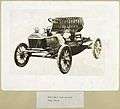

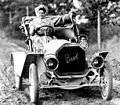

_1Y7A6067.jpg)



_(20634081715).jpg)



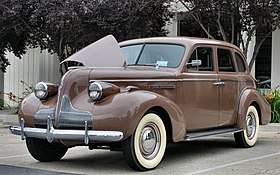
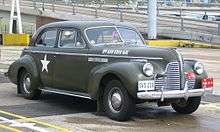

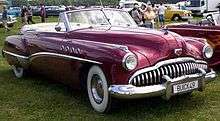



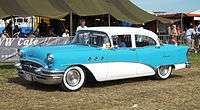

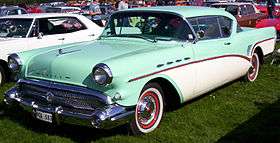

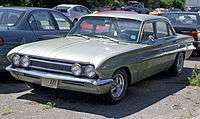

.jpg)

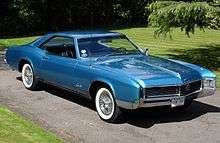

.jpg)
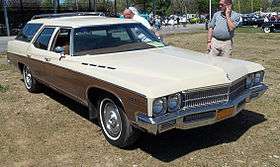
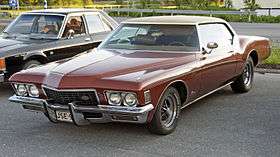
.jpg)
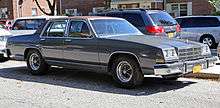



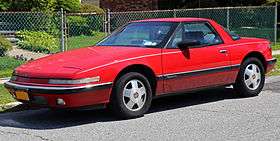


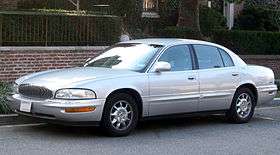
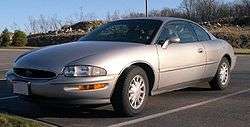



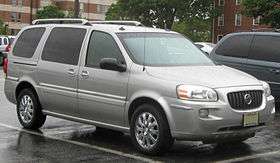


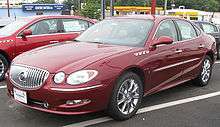
.jpg)

.jpg)
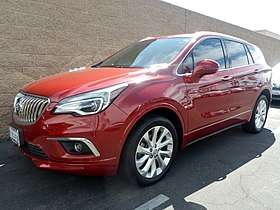
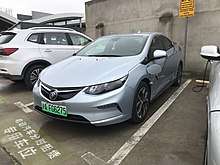

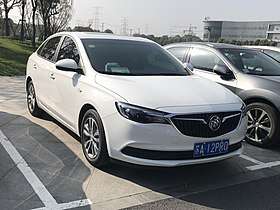
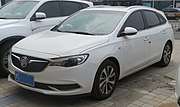

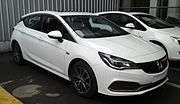
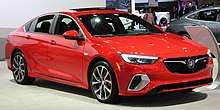

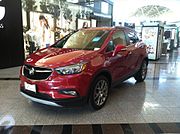
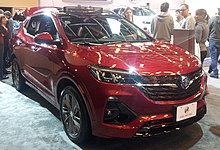
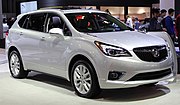


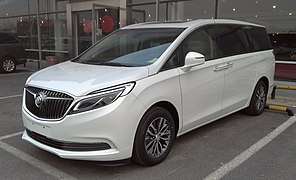
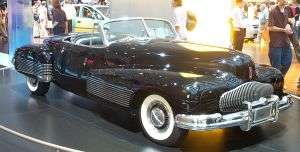
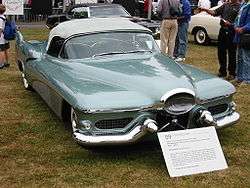
.jpg)
.jpg)
.jpg)
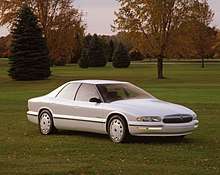

.jpg)
